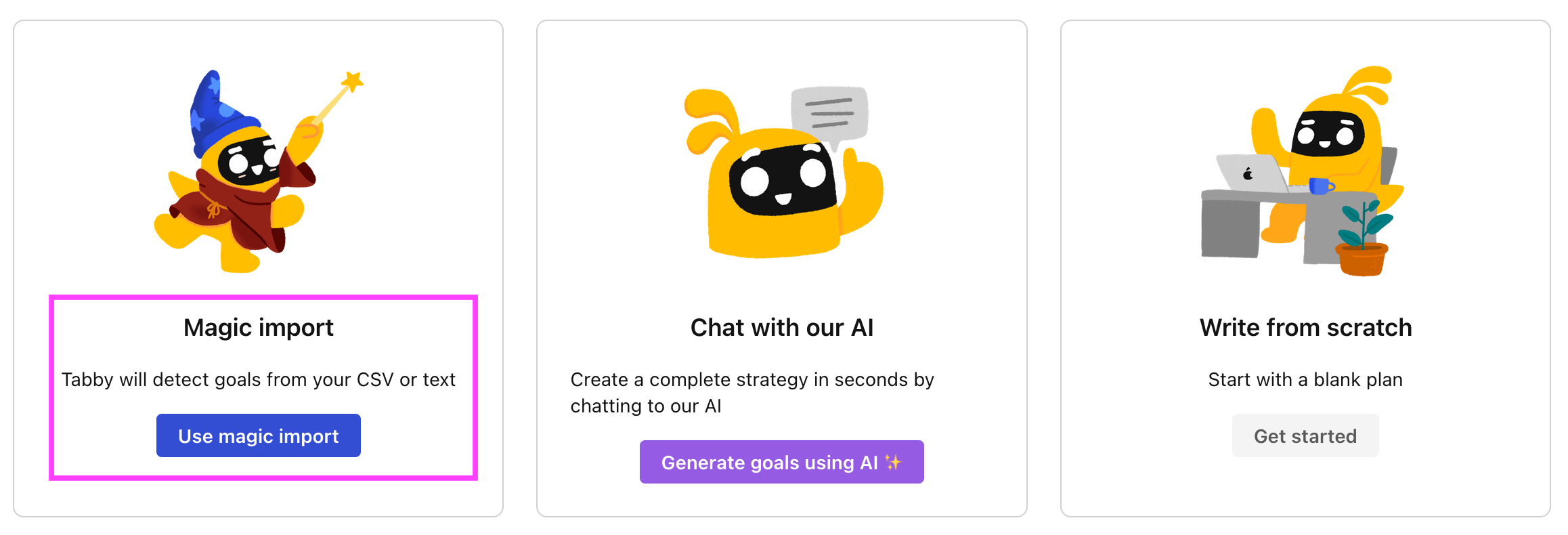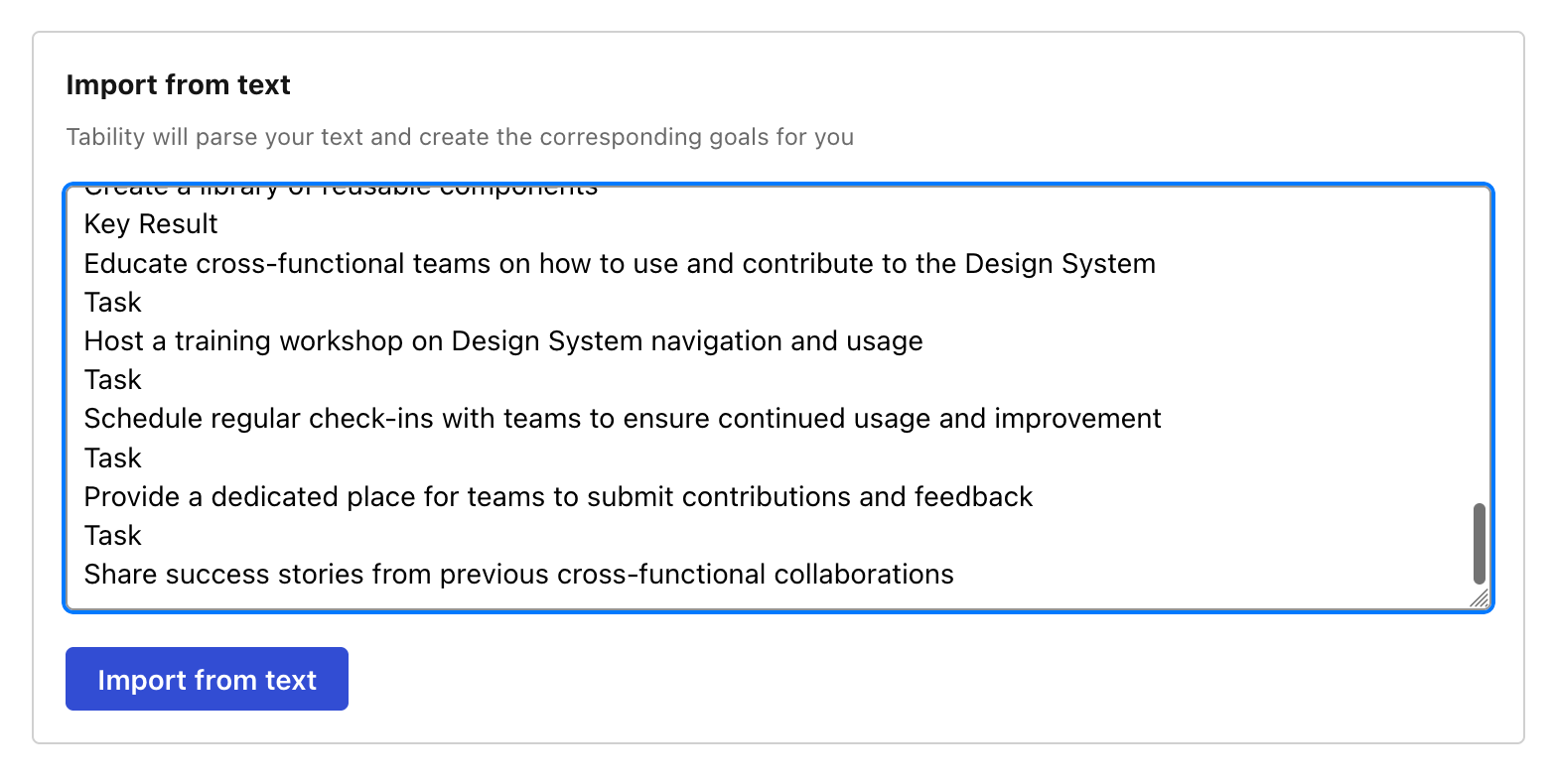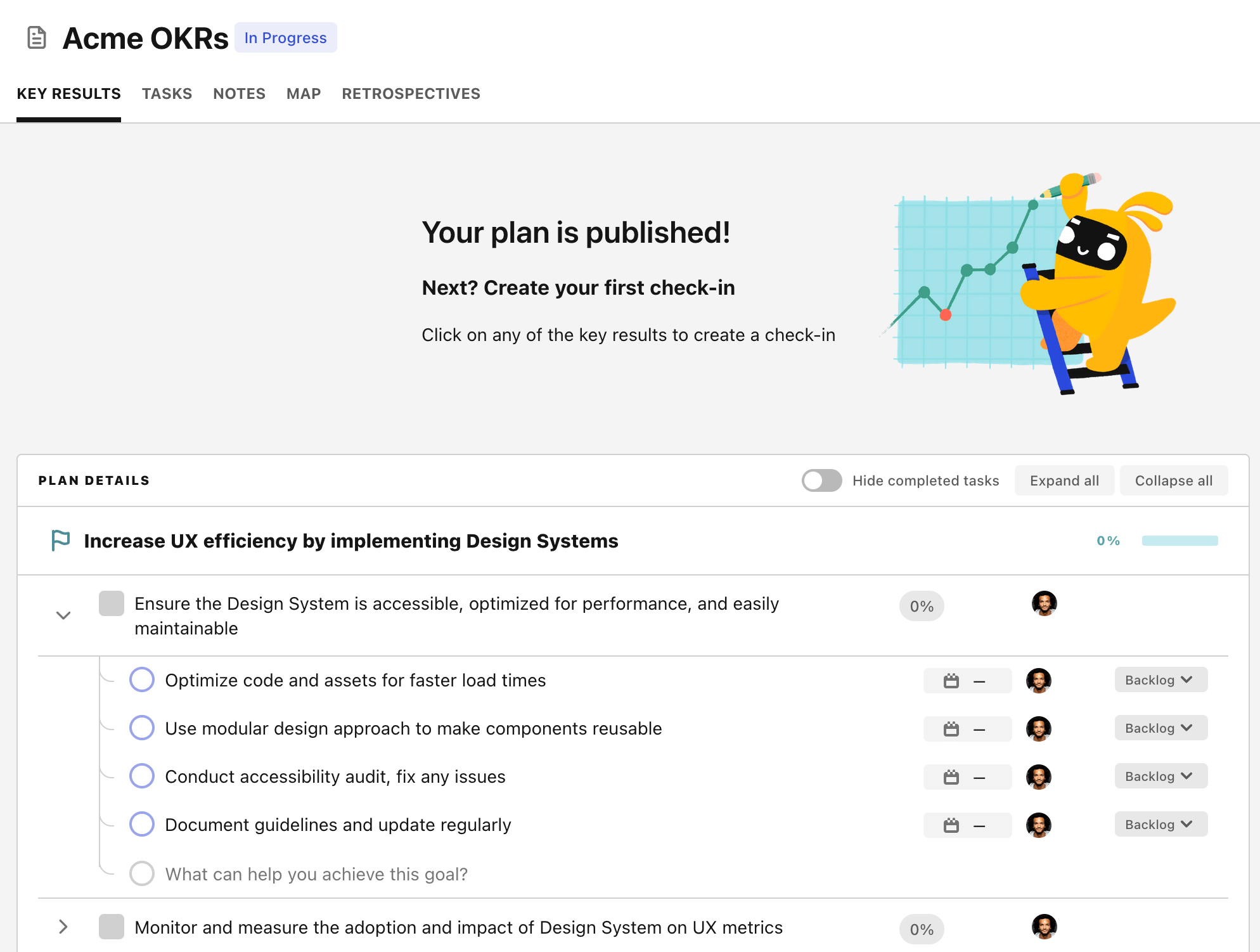OKR template to maintain near-perfect uptime for critical systems
Your OKR template
Under the same larger objective, the OKR stresses on improving system recovery time from 30 to 15 minutes. Initiatives for this include enhancing diet for faster muscle recovery, improving sleep patterns for better restoration, and implementing quicker cooldown methods after exercise.
The third part of the objective is to reduce system outage incidents by 20%. Key activities for achieving this include upgrading outdated hardware components, implementing regular system maintenance protocols, and training staff on proactive troubleshooting methods.
The OKR aims to ensure uninterrupted and efficient functioning of critical systems through regular maintenance, efficient recovery measures, and reduction in system outage incidents.
ObjectiveMaintain near-perfect uptime for critical systems
KRConduct weekly preventive maintenance to prevent unexpected system failures
Repair issues identified promptly
Document any abnormalities found during checks
Schedule weekly checks on all system components
KRImprove recovery time from 30 to 15 minutes
Enhance diet for faster muscle recovery
Improve sleep patterns for better restoration
Implement quicker cooldown methods post-exercise
KRReduce system outage incidents by 20%
Upgrade outdated hardware components
Implement regular system maintenance protocols
Train staff on proactive troubleshooting methods
How to edit and track OKRs with Tability
You'll probably want to edit the examples in this post, and Tability is the perfect tool for it.
Tability is an AI-powered platform that helps teams set better goals, monitor execution, and get help to achieve their objectives faster.
With Tability you can:
- Use AI to draft a complete set of OKRs in seconds
- Connect your OKRs and team goals to your project
- Automate reporting with integrations and built-in dashboard
Instead of having to copy the content of the OKR examples in a doc or spreadsheet, you can use Tability’s magic importer to start using any of the examples in this page.
The import process can be done in seconds, allowing you to edit OKRs directly in a platform that knows how to manage and track goals.
Step 1. Sign up for a free Tability account
Go tohttps://tability.app/signup and create your account (it's free!)
Step 2. Create a plan
Follow the steps after your onboarding to create your first plan, you should get to a page that looks like the picture below.

Step 3. Use the magic importer
Click on Use magic import to open up the Magic Import modal.
Now, go back to the OKR examples, and click on Copy on the example that you’d like to use.

Paste the content in the text import section. Don’t worry about the formatting, Tability’s AI will be able to parse it!

Now, just click on Import from text and let the magic happen.

Once your example is in the plan editor, you will be able to:
- Edit the objectives, key results, and tasks
- Click on the target 0 → 100% to set better target
- Use the tips and the AI to refine your goals
Step 4. Publish your plan
Once you’re done editing, you can publish your plan to switch to the goal-tracking mode.

From there you will have access to all the features that will help you and your team save hours with OKR reporting.
- 10+ built-in dashboards to visualise progress on your goals
- Weekly reminders, data connectors, and smart notifications
- 9 views to map OKRs to strategic projects
- Strategy map to align teams at scale